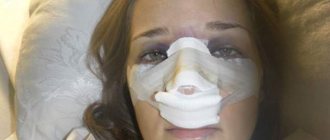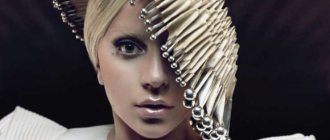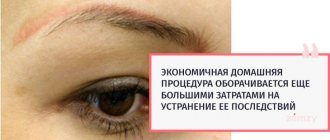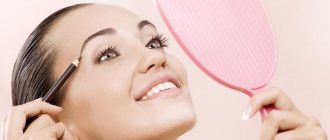Even a brilliantly performed rhinoplasty can be ruined by the correct behavior and disobedience of the patient during the rehabilitation period. What can and cannot be done after rhinoplasty?
If you have not had rhinoplasty yet, be sure to read our article about the preparation and features of this operation.
The first days after the procedure are very important:
- You cannot remove tampons from your nose yourself, even for a very short time. If they cause great inconvenience, you need to be patient.
- The outer lining also cannot be removed independently, since it will no longer be possible to return it to its previous position. It maintains the new shape of the nose; if the bandage is removed earlier than two weeks, complications may arise. In certain cases (with a slow healing process, as well as during complex operations), the bandage must be worn even longer.
- You can only sleep on your back with your head slightly raised on a high pillow. You can't sleep on your side.
If you have already had rhinoplasty , then you will be interested in the article “How many days after rhinoplasty is the cast removed?”
Why can’t you wear glasses and touch the stitches after rhinoplasty?
When the bandage is removed, even a light touch to the stitches can lead to deformation of the scar and infection. Therefore, at first you can touch your nose, but very carefully and not where the stitches are.
You can't wear glasses for about one and a half to two months. They put pressure on the bridge of the nose, as a result of which its shape may change. If your vision is poor, you may want to consider purchasing contact lenses to wear until you can wear glasses.
Removing turundas and removing plaster.
After 3 - 5 days
The splints are removed from the nostrils. Contrary to common misconceptions, this procedure is absolutely painless. Thanks to the removal of splints, it becomes easier for the patient to breathe through the nose. True, free nasal breathing will still be partially blocked until the primary swelling subsides. During this period, patients begin to experience itching and irritation of the skin under the cast or splint. This is an absolutely normal phenomenon, and you just have to endure it. Do not move or remove the immobilizing bandage without permission under any circumstances! This can lead to nasal deformities and spoil the result of rhinoplasty. If the surgeon discovers traces of such actions, he has every right to decline responsibility for the outcome of rhinoplasty.
After 7 - 10 days
the surgeon removes the plaster cast. What you see in the mirror after this should not scare you - your nose will be 1.5-2 times larger than planned for rhinoplasty. This is swelling that has not yet gone down. He can “walk” on his nose for up to six months. The final result of rhinoplasty is assessed after 1 year, when both external and internal swelling are neutralized. On days 7-10, the cast may fall off on its own, and this is not a big deal if you didn’t “help” it. But in this case, I advise you to contact a surgeon ahead of time.
After removing the tampons, stitches may remain in the nostrils, columella and nasal folds. Do not pull them with tweezers or remove them. This is fraught with divergence of the seams and unsightly scars. Try to avoid active facial expressions, especially laughter.
How to properly and carefully care for your face after rhinoplasty?
Deep facial cleansing should not be done after rhinoplasty for at least a month. To cleanse the skin, it is best to use gentle cosmetics.
Sometimes the question arises: is it permissible to massage the nose? If after surgery a small hump of cartilaginous origin appears, the doctor may prescribe several massage sessions. In this case, the facial skin should be smeared only with those ointments that were prescribed by the doctor.
Is it possible to rinse the nose and what is the best way to do it after surgery? You can wash it, but you need to do it correctly. It is best to consult with your plastic surgeon so that he can give recommendations regarding the choice of the right products and the intensity of the process. In normal cases, the following rules apply:
You should start rinsing your nose 3-4 days after surgery. Usually at this time the tampons are already removed.
In the first month after the procedure, it is best to do this three times a day with a weak saline solution or other means that are based on sea water. If after a month there is still a feeling of congestion or discomfort, you can extend the rinsing period.
How to rinse your nose correctly?
- Gently tilt your head slightly to the side over the sink.
- Take a deep breath. Then hold your breath for a while.
- Rinse the left nostril with a special pipette. After that, it is very easy to blow out the contents of the nose. It is important to do this very slowly, slightly blowing air and keeping your mouth open. You should not pinch the wing of your nose, but rather carefully close the right nostril with the pad of your finger.
- Then you should also rinse the right nostril.
After rinsing, of essential oils such as sea buckthorn, peach or apricot into your nose
Using rinsing, you can clean your nose well, which helps:
- reduce swelling or inflammation,
- restore blood vessels to their former elasticity,
- speed up the process of tissue repair,
- moisturize the mucous membrane in a timely manner and
- free the intranasal passages from dried blood and postoperative crusts.
- As a result, everything heals faster and breathing improves.
Reminder! When it comes to rinsing your nose, it is very important to follow your doctor's recommendations exactly.
Physiotherapy and massage
After the operation, the doctor prescribes antibiotics to prevent inflammation, probiotics, and antihistamines.
During the rehabilitation period, cases of elevated temperature are common; it is worth stocking up on antipyretics. A slight increase in temperature – up to 37-38 degrees – can be considered normal for rehabilitation after rhinoplasty.
In this case, the patient may feel weakness, nausea, and dizziness. At this temperature, it is enough to take the medicine and rest.
At a higher temperature, you should consult your doctor, as this may indicate an inflammatory process.
The recovery period is not without pain, so analgesics will not hurt either.
After removing the tampons, you need to treat the nasal mucosa daily with a cotton swab moistened with a solution of hydrogen peroxide and oils. Cosmetic oils of peach, apricot, grape, and almond can be purchased at the pharmacy. They facilitate the separation of crusts and moisturize the mucous membrane. It will not be superfluous to carefully rinse your nose with saline solutions.
After rhinoplasty, you can use vasoconstrictor drops (naphthyzine, ephedrine) to improve breathing. To quickly resolve bruises after rhinoplasty, heparin ointment or bodyagu can be used externally.
When can you appear in public and go to work after rhinoplasty?
Swelling and bruising after rhinoplasty will go down differently for different people. Most often, you can appear in public within 1–3 weeks.
Around this time you are allowed to go to work. This is only true if it is not associated with heavy physical activity.
We have prepared a separate publication about the resolution of swelling after rhinoplasty.
Medicines to help
Recovery after rhinoplasty also takes place with the help of medications.
You cannot prescribe medications for yourself: only a doctor can prescribe them, based on your condition, tendency to allergic reactions, etc.
Antibiotics, anti-inflammatory drugs, and painkillers are required.
Antibiotics are taken according to the schedule, from 5 to 7 days, painkillers - approximately 7 to 10 days.
You may also be prescribed medications to get rid of swelling as quickly as possible; ointments, gels, possibly hormonal drugs.
Is it possible to yawn, sneeze, blow your nose, cry and laugh after rhinoplasty?
All of the above actions are natural for humans. We often do this without thinking. What happens after rhinoplasty? What do you need to remember?
Everything must be done so as not to damage the very sensitive nose immediately after surgery.
For example, you need to blow your nose very carefully. If you do this as usual, then a strong pressure drop occurs inside the nose, and the nose is often squeezed with your fingers. All this can damage the shape of the new nose and lead to complications.
It is better to sneeze with your mouth open so as not to create a lot of pressure in your nose.
Hair washing procedure after
After a nose job, you should not take a hot shower; to avoid high temperatures, you should only use warm water when washing your body and head.
The method of washing your hair without outside help will be difficult, since during this procedure you should not allow your nose to tilt forward.
If you do not maintain the correct body position when washing
head, then you can get a deformation of the nose that has not yet healed. It must be carried out as in a hairdresser, throwing your head back so that the hair flows down over the sink or bathtub, and the position of the nose remains unchanged.
When can you exercise after rhinoplasty?
Professional athletes are wondering if they can have plastic surgery and when can they return to sports after rhinoplasty?
Rhinoplasty plastic surgeons advise taking seriously the recommendation to limit physical activity during the recovery period.
Until the tampons in the nose are removed, you should under no circumstances be subjected to even minor physical exertion.
It is better to give up any sports activities for about 2-3 months.
You should especially avoid exercises that cause a rush of blood to the face: for example, turning your head, bending forward, running.
You cannot engage in serious sports for at least six months after surgery.
Can I practice boxing or other martial arts and dangerous sports after rhinoplasty? Doctors prohibit returning to sports that do not exclude possible injury to the nose.
What explains this? A previously operated nose is much more difficult to heal after injuries.
What's prohibited?
- Baths, saunas
Sudden temperature changes are very harmful for a newly corrected nose. Therefore, any specialist will tell you: you should not go to the bathhouse or sauna immediately after surgery.
Moreover, you should not do this during the first two months.
Contrast showers and hot baths can also cause complications and poor health.
It is best to use warm water for bathing.
- Solariums, beaches
You should not sunbathe for two months after rhinoplasty.
Ultraviolet rays when exposed to the skin can cause hyperpigmentation of the nose. Therefore, it is worth using sunscreen, even just when going outside.
- Pool
In the first two months after rhinoplasty, you should not go to the pool. This is due to the high risk of catching a cold or infection.
- Hot/cold
It is not recommended to drink hot coffee and eat ice cream. You should abstain from these products for 2 months.
I would also recommend sticking to a salt-free diet. This will help reduce swelling.
- Sport
You should forget about sports for 2-3 months. Even about simple actions like bending forward or turning your head.
Moreover, this restriction also applies to professional athletes. Your body also needs time to recover.
- Alcohol and cigarettes
Need I say that drinking alcohol and smoking during the rehabilitation period is unacceptable?
Alcohol affects blood vessels. Because of this, blood flow is disrupted.
Alcohol increases the risk of blood clots.
Alcohol increases swelling
And even if you ignore all of the above, it is worth remembering that a drunk person is unsteady on his feet and can damage the newly made nose.
- Glasses
The frame puts pressure on the bridge of your nose, so it will hurt. In addition, there is a risk of deformation.
I recommend using contact lenses for at least two to three months.
Is it possible to drink alcoholic beverages after rhinoplasty and if so, when?
Immediately after surgery, you should not drink alcohol in any form. This recommendation should be followed for the following reasons:
- Alcohol causes rapid expansion and sharp constriction of blood vessels, and this in turn disrupts normal blood flow.
- Alcohol-containing liquids can cause blood clots to form in capillaries and small vessels, which interfere with the healing process.
- Alcohol increases swelling in the eye area, impairs metabolism and slows down the recovery process.
- Any amount of alcohol may not be combined with the medications used, which means serious complications are possible.
- A drunk person may forget about doctor's recommendations, and may also fall and injure his nose.
When can you drink alcohol after rhinoplasty? It is advisable to completely give up alcohol for at least a month. It’s better not to drink alcohol for about six months.
Diet after
Surgical intervention is a factor of additional burden on the body in the form of stress, after which the tissues require restoration of the supply of vitamins, minerals and other nutrients.
The rehabilitation period involves a temporary restriction in certain foods and a specialized diet that must be followed for 2 months.
You can eat food 5-6 times during the day, but in small portions. In small volumes, food entering the body will be absorbed faster.
You can't eat:
- roast;
- salty;
- smoked;
- spicy;
- pickled;
- pasta;
- sweets;
- from meat - lamb, pork, goose meat.
All dishes that are prepared at home should be steamed or boiled; to make cooking easier, you can use a double boiler.
You can and even should eat:
- meat
without fat - chicken, beef, turkey; - lean fish;
- fermented milk
products ; - from cereals
- oatmeal, pearl barley and buckwheat (no more than 200 grams); - vegetables
in unlimited quantities - tomatoes, cucumbers, radishes, zucchini; - figs,
apricots, dried apricots; - crackers,
rye bread; - from liquids - green tea,
compote, fruit drink, jelly.
The volume of water consumed per day should be at least 2 liters, thus speeding up metabolism and food is digested much faster. Following such a diet during the first 2 months after plastic surgery helps to normalize metabolic processes in the body, protects it from excessive stress and stress, and does not cause swelling.
All norms of a rational diet must additionally be explained to the patient by a surgeon who is interested in the speedy appearance of the result of a successful operation.
Is it possible to smoke before and after rhinoplasty?
All people know about the dangers of smoking, so the best solution is to completely give up smoking and not return to it in a month or a year. This applies not only to cigarettes, but also to hookah smoking, passive smoking, and the use of nicotine substitutes in the form of patches or chewing gum. Why?
Before surgery, you should not smoke for at least a month because:
- A smoker has a reduced immune system, which means the body’s protective functions are weakened.
- Nicotine causes blood vessels to constrict and blood pressure to rise.
- Smoking increases swelling and bruising after surgery.
- You should also not smoke after rhinoplasty because:
- Nicotine interferes with the tissue healing process due to the fact that a limited amount of blood flows through too narrowed vessels and the required amount of oxygen does not reach the tissues.
- Smoking leads to terrible complications in the form of necrosis or tissue death.
How long does the operation take?
The operation to correct the shape of the nose does not last very long. Depending on the complexity of the wash, it can take from 30 minutes to 2 hours. You will have to stay in the hospital for a couple more days. All this time you will have to breathe through your mouth, since tampons in your nose will interfere with normal breathing. After 10 days, the fixing bandage will be removed.
Rhinoplasty is considered the least dangerous type of surgery. Side effects occur in approximately 10% of cases. And the most common complications are the patient’s refusal to accept the new appearance, when reality does not coincide with the expected effect.
A woman always strives to be attractive; even during pregnancy, she very carefully monitors her appearance and dreams of serious corrections of existing deficiencies. Rhinoplasty has been and remains one of the most popular plastic surgeries; it will allow you to rapidly approach the idea of an ideal face, so a woman will never refuse the opportunity to change the shape of her nose, even if she is in an interesting position.
But is it worth performing rhinoplasty during pregnancy? Can you put yourself in the hands of a plastic surgeon without harming the health of the unborn baby? Only specialists can answer these questions, and they are confident that any operation performed under general anesthesia can negatively affect the baby’s intrauterine development, so it is better to postpone such adjustments until later.
Pregnancy is a very responsible state; a woman should think not only about herself, but also about her unborn child. A good professional plastic surgeon will tell you that nose surgery is contraindicated during this period, and will definitely dissuade the woman from making a rash decision.
Very often, selfish aspirations lead to real tragedies. Substances contained in modern anesthetics can harm not only the baby, but also the mother herself. When she is carrying a child, the hormonal levels change, and these changes can actively stimulate the growth of cartilage tissue in the nose, so rhinoplasty is strictly forbidden during this period: the results of the operation can be very unpredictable. In addition, there is a risk of serious complications, such as an unexpected reaction to anesthesia, the appearance of severe swelling, and other troubles. Therefore, those who pursue a purely aesthetic goal of such an undertaking should postpone the operation and postpone it even not until the time of the birth of the child, but until the end of breastfeeding.
There are small exceptions to every rule. Rhinoplasty can also be performed during pregnancy if defects in the internal nasal septum prevent the baby from fully developing. Yes, there are such cases. When the mother's breathing is difficult, little oxygen enters the body, and this, in turn, has a very negative effect on the development of the fetus. In this case, the risk is justified; numerous consultations with the obstetrician-gynecologist leading the pregnancy and the vast experience of the entire team of doctors servicing plastic surgery will help you select the most gentle medications and perform all surgical procedures as quickly as possible. The entire postoperative period, the expectant mother will be under the close attention of doctors, who will try to avoid any side complications.
In all other cases, pregnant women should be denied rhinoplasty; if the situation is serious and the displeasure threatens to provoke severe emotional stress, the patient will be offered to undergo treatment with an experienced psychologist who will try to reconcile her internal state with the external perception of her own appearance.
In the first 2-3 days after rhinoplasty, the most pronounced discomfort is observed. There is swelling and bruising on the face, the nose is breathing poorly, and the overall heaviness of the face is felt. Headaches are possible.
In a day
During rhinoplasty, the surgeon inserts silicone splints or cotton wool into the nasal passages. A splint or plaster is applied to the external nose. Please note: it is strictly prohibited to remove the plaster cast and remove the turundas yourself - this is fraught with serious complications! The catheter, which is installed in a vein to administer general anesthesia and postoperative drug infusion, can cause some inconvenience. It is removed when the patient is discharged and goes home. I recommend that you avoid wearing clothes that need to be pulled over your head, especially knee socks, T-shirts and jumpers with a narrow neck.
Other Important Reminders Regarding Rhinoplasty Recovery
Is it possible to fly on an airplane after rhinoplasty? You can do it 5-7 days after the operation, but you will have to fly with a bandage. It is better to wait 14 days so that you can be observed by your doctor who performed the operation.
Can I take antibiotics after rhinoplasty? Usually this issue is decided by the attending physician. Most often, antibiotics are prescribed without fail. This is done to prevent inflammatory processes from starting.
When can you plan a pregnancy after rhinoplasty? It is advised to plan replenishment no earlier than six months, and preferably a year after the operation. This is necessary so that the woman can fully recover and better cope with pregnancy and childbirth.
Stages of recovery and their features
Rhinoplasty is a serious operation. Therefore, healing is quite slow. And before the final result appears, your appearance and well-being will change more than once.
First days
Immediately after the patient comes to his senses from anesthesia, he feels weakness, drowsiness, and nausea. All this is a consequence of the influence of anesthetics. As they are removed from the body, the symptoms will disappear.
Immediately after the operation is completed, turundas are placed in both nostrils, and a plaster or plastic pad is fixed on the nose. So we won't be able to see what it looks like yet.
The face has a frightening appearance due to swelling. It is especially noticeable in the eyelid area, making the eyes appear swollen. Bruises are visible underneath. The cheeks may also become swollen. But after 5 - 7 days, the volume of fluid in the tissues will decrease, and the face will take on a more familiar appearance.
The day-by-day rehabilitation after rhinoplasty looks like this:
the first couple of days you may experience pain, so appropriate medications are prescribed;
While the risk of infection remains, a course of antibiotics is usually recommended;
in the intranasal passages, hemostatic turundas are installed for several days to support the new shape of the organ, which also absorb secretions;
Until the tampons are removed from the nostrils, it is difficult to breathe through the nose, so you have to do it with your mouth;
in between replacing turundas, the mucous membrane is treated with medications prescribed by the doctor to promote healing;
- You should lie down more for a week, an acceptable position for resting and sleeping is on your back;
- after 10 - 14 days, the stitches are removed, the plaster or plastic pad is removed.
In general, the features of the recovery period depend on the volume of intervention. With an extensive operation, there is more damage, so the discomfort is greater. Rehabilitation after rhinoplasty of the tip of the nose will go faster. For example, the plaster will be removed within a week; the swelling in this case is not so pronounced. And septoplasty is associated with less discomfort, requirements and prohibitions than correction of the back of the organ.
We recommend reading about laser septoplasty. From the article you will learn about indications and contraindications for the procedure, technique, recovery period, possible complications, advantages and disadvantages of the method, cost.
And here is more information about septoplasty and rhinoplasty when correcting a deviated nasal septum.
First weeks
From the 10th - 14th day until the end of the 3rd month, you can count the next stage of rehabilitation. When the sutures and splint are removed, your health improves. But breathing through the nose may still not be completely free. After all, in the first weeks the swelling did not go away completely. Bruises remain, but you can already see the outlines of the nose, which become more defined. And yet this is not yet its final appearance, since in 3 weeks the swelling goes away only by 50%.
However, after a month you don’t have to hide from prying eyes, as your face looks quite presentable. But the size of the nose will still decrease, and the shape will improve. And if something about it doesn’t suit you, you don’t need to tune in to a new correction.
Ultimate rehabilitation
The final period of rehabilitation after rhinoplasty starts from the 3rd month. By this time the swelling should have gone down. And the nose takes on the shape and size newly created by the doctor. If the operation is performed well, all the imperfections that were annoying before will disappear. And, conversely, errors made during the intervention become noticeable. At this stage, we can say whether rhinoplasty was a success, or whether it is worth thinking about a new correction of defects.










